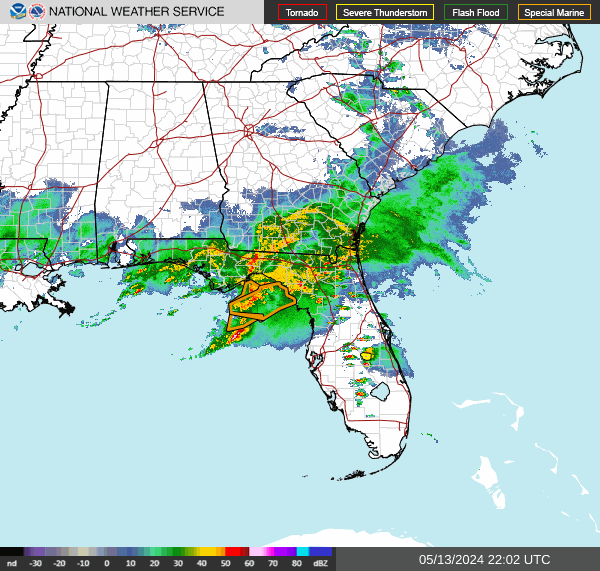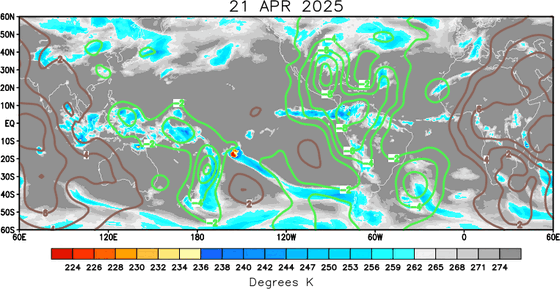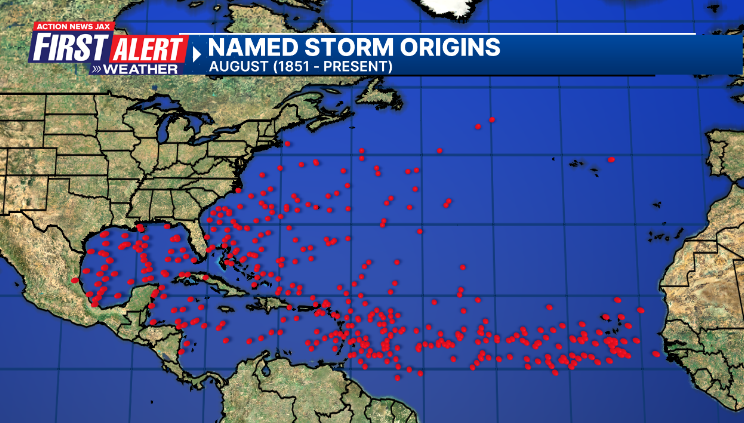Jacksonville, Fl. — The “Buresh Bottom Line”: Always be prepared!.....First Alert Hurricane Preparation Guide... City of Jacksonville Preparedness Guide... Georgia Hurricane Guide.
STAY INFORMED: Get the * FREE * First Alert Weather app
FREE NEWS UPDATES, ALERTS: Action News Jax app for Apple | For Android
WATCH “Preparing for the Storm”
WATCH “The Ins & Outs of Hurricane Season”
READ the First Alert Hurricane Center “Preparation Guide”
***** ALWAYS CHECK & RE-CHECK THE LATEST FORECAST & UPDATES! ****
Tropics threats for Jacksonville/NE Florida/SE Georgia: None.
The “Buresh Bottom Line”:
* Debby hit the Florida Big Bend Mon. with a landfall about 7am. NHC: “Air Force Reserve Hurricane Hunter aircraft observations and Doppler radar images from Tallahassee indicate that the center of Hurricane Debby has made landfall around 700 AM EDT (1100 UTC) near Steinhatchee, Florida. Data from the Hurricane Hunters indicate that the minimum pressure at landfall was around 979 mb (28.91 in) and the maximum winds were estimated to be around 80 mph (130 km/h).” A second landfall - as a tropical storm with winds near 50 mph - occurred early Thu. about 2am near Bulls Head, SC.
* For Northeast Florida/Southeast Georgia conditions continue to improve with an offshore, decreasing winds & clearing skies.
* Realize impacts from Debby will occur many miles from the center & OUTSIDE of the forecast cone.
* Despite a weaker Debby, very heavy rain & a flooding threat will continue northeast all the way to inland New England & Southeast Canada.
The Atlantic Basin Overview:
(1) “Debby” - The 4th Atlantic named storm of the season strengthened into the 2nd hurricane of the season with the 11pm Sunday, 08/04 advisory. Debby was intensifying right up to landfall but thankfully ran out of time over the warm Gulf water with a 7am EDT landfall at Steinhatchee some 60-70 miles north/northwest of Cedar Key.
The end game for Debby is finally on the horizon as the next upper level trough moving east along the U.S./Canadian border will capture the weakening systems that will soon transition to a post-tropical low pressure area while accelerating northeast inland from N. Carolina to Central/SE New York by Fri. night to SE Canada by late Saturday.
Keep in mind impacts - especially heavy rain & flooding - from Debby will extend well away from the center with the heaviest rain evolving to along & west of the center’s track.









(2) A couple of active tropical waves are over the Central & Eastern Atlantic. Forecast models have started to catch on to the potential for active couple (at least) of weeks ahead.
The primary first ‘wave of interest’ came off the coast of Africa a few days ago & will continue moving westward then veer west/northwest once about two-thirds west - 45 - 50 degrees W - across the Atlantic. This wave has longer term potential & we may have a tropical cyclone close to the Caribbean &/or SW Atlantic by the middle of next week (Aug. 13th - 15th... & *perhaps* not too far from the U.S. approx Aug. 17th-19th [a week from this weekend]). It’s way too early to determine exact track or any threat to land, but it’s certainly a wave to watch. A faster deepening storm would likely turn northward earlier. And realize the European forecast model has had an east bias so far this season.
(3) A large upper level low pressure area is spinning southwest of Bermuda with disorganized showers & t’storms. No surface development is expected.
The velocity potential anomalies map below shows a lot of sinking air (brown lines) - & a lack of convection - over the Atlantic Basin to the far East Pacific while rising air (green lines) is over the Eastern Pacific where strong convection is notable. Often the green areas (MJO pulse) will correlate with increased tropical activity. So it’s the E. Pacific that is active, & this pulse is moving eastward - signs of which we’re already seeing - helping to set off a return to a more active Atlantic through at mid to late August.

REMEMBER WHEN A TROPICAL STORM OR HURRICANE IS APPROACHING: Taping windows is *not* recommended & will not keep glass from breaking. Instead close curtains & blinds.
Realize the forecast cone (”cone of uncertainty”) is the average forecast error over a given time - out to 5 days - & *does not* indicate the width of the storm &/or where damage might occur.
The upper oceanic heat content (UOHC) [tropical cyclone heat potential/TCHP] across the SW Atlantic, Gulf & Caribbean is unseasonably high for this time of year:






Water vapor loop (dark blue/yellow is dry mid & upper level air):


August tropical cyclone origins (early season breeding grounds are the Gulf &/or Western Caribbean:
Averages below based on climatology for the Atlantic Basin for August (1 hurricane so far, 3 tropical storms):
Wind shear (red - strong shear; green - low shear):



Saharan dust spreads west each year from Africa driven by the prevailing winds (from east to west over the Atlantic). Dry air = yellow/orange/red/pink. Widespread dust is indicative of dry air that *can* interfere with the development of tropical cyclones. However, sometimes “wanna’ be” waves will just wait until they get to the other side of - or away from - the dust plume then try to develop if other conditions are favorable (we’ve already seen this with Beryl & Debby this year). In my personal opinion, there is way too much “hoopla” about the presence of Saharan dust & how it relates to tropical cyclones. In any case, the peak of Saharan dust typically is in June & July.

2024 names..... “Ernesto” is the next name on the Atlantic list (names are picked at random by the World Meteorological Organization... repeat every 6 years). Historic storms are retired [Florence & Michael in ’18 (the last time this year’s list was used)... Dorian in ’19 & Laura, Eta & Iota in ‘20, Ida in ‘21 & Fiona & Ian in ‘22]). In fact, this year’s list of names is rather infamous because of the ‘04 season when Charley, Frances, Jeanne & Ivan - all retired names - hit Florida within a matter of about 6 weeks. The WMO decided - beginning in 2021 - that the Greek alphabet will be no longer used & instead there will be a supplemental list of names if the first list is exhausted (has only happened three times - 2005, 2020 & 2021). The naming of tropical cyclones began on a consistent basis in 1953. More on the history of naming tropical cyclones * here *.





East Atlantic:





Mid & upper level wind shear (enemy of tropical cyclones) analysis (CIMMS). The red lines indicate strong shear:
Water vapor imagery (dark blue indicates dry air):

Deep oceanic heat content over the Gulf, Caribbean & deep tropical Atlantic. The colors will brighten greatly as the water warms to greater depths deeper into the season:

Sea surface temp. anomalies:


SE U.S. surface map:

Surface analysis centered on the tropical Atlantic:

Surface analysis of the Gulf:

Caribbean:

Atlantic Basin wave period forecast for 24, 48, 72 & 96 hours respectively:





East & Central Pacific:
Weakening “Emilia”:






West Pacific:

Global tropical activity:

“Maria” is forecast to move northward east of Japan before turning rather sharply northwest to Northern Japan while weakening by early next week:



Cox Media Group
:quality(70)/cloudfront-us-east-1.images.arcpublishing.com/cmg/JIFG55NSN5HKZK6LKEZ4C7UU5I.jpg)



:quality(70)/d1hfln2sfez66z.cloudfront.net/09-09-2024/t_e304480dea3c4f338b58f01fe79b0be3_name_ct_Florida_Blue_Vs_Baptist.png)
:quality(70)/cloudfront-us-east-1.images.arcpublishing.com/cmg/P6GD5BWTHJHQBNH63W7DSKVWU4.png)
:quality(70)/cloudfront-us-east-1.images.arcpublishing.com/cmg/FC43EOLXW7G67O34CNGPXWGE3E.jpg)
:quality(70)/cloudfront-us-east-1.images.arcpublishing.com/cmg/ZAPBPUQP2ASPQB7UQ5IIMRZO4U.jpg)
:quality(70)/cloudfront-us-east-1.images.arcpublishing.com/cmg/KRL2PIMXMF5V5JHPWXPECNBPGQ.jpg)